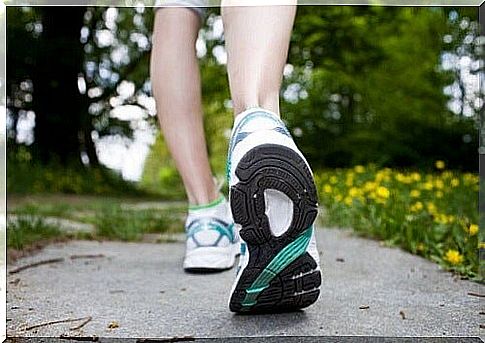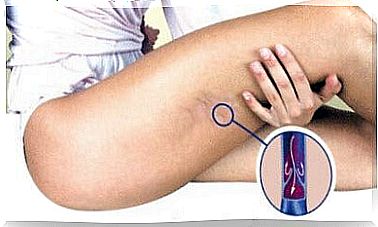Why Do I Feel Tingling In My Arms And Legs?

No doubt this is a very unpleasant feeling. When our arms, hands, legs or feet go numb, we don’t know what to do to make them “wake up” and everything goes back to normal. So, know the answer to the question in the title, and know why we sometimes feel tingling.
Numbness and tingling: what are they? Why do they occur?
Both are abnormal sensations and can occur in any part of the body. However, they are commonly experienced on the legs, arms, hands and fingers, both feet and hands. Among the most recurrent causes of limb numbness are:
- Staying in the same position for a long time, whether standing or sitting (for example, at work or on a long journey);
- Damage to a nerve. If it occurs in the neck, it can have repercussions on the arms and hands. If it is in the lower back, it can cause tingling in the legs;

- Pressure on spinal or peripheral nerves;
- Herpes zoster (also known as shingles) infection;
- Deficit in blood supply due to inflammation of a vessel, atherosclerosis or freezing;
- Unbalanced levels of potassium, calcium or sodium;
- Lack of vitamin B12;
- Intake of some medications;
- Nerve damage from alcohol, tobacco and lead;
- Radiotherapy;
- Insect, mite or animal bites;
- Allergies to shellfish and seafood;
- Carpal tunnel syndrome (in the wrist);
- Hypothyroidism;
- Stroke and transient ischemic attack.
Home remedies and recommendations for tingling hands and legs
Water is one of the best natural remedies to “wake up” our legs or hands when they are numb.
Therefore, place them in a container of fresh water for about ten minutes or until the tingling sensation disappears. Many people choose to energetically move the dormant limb. Other options are:
To walk
Walk around the place you are at the moment you start to feel the tingling. You will have to endure the spasms produced by the leg for a few moments, but it is a very effective action, especially if you have been sitting for a long time.

stand on tiptoe
Another alternative when your leg goes numb is to stand on your tiptoes, just like ballerinas do, and then lower your heels to the floor.
Repeat the exercise 10 times to activate blood circulation in the lower limbs. If you tend to have a lot of tingling, do this exercise every day before bed, even if you’re not experiencing a tingling moment.
eat foods rich in iron
As we talked about before, the deficit of this nutrient may be causing tingling in the legs. Lentils and beets can help reduce this problem as they have many other properties besides iron.
In addition, it is also good to add to the diet foods such as eggs, milk, nuts, peas, beans and green vegetables such as spinach and chard, for example.
Make an ointment with hot peppers
This ointment can help reverse the situation, and to prepare it, you’ll need a dozen red peppers.
Therefore, heat them over high heat. Then place them on a soft cloth and knead them into a paste. Apply this paste to the area affected by the tingling.
In this way, the heat of the pepper will reduce pain and discomfort. If you suffer from this problem very often, you can leave this “ointment” prepared and heat it up for about a minute before applying it.
Avoid certain foods and drinks
Alcohol and coffee during or after dinner are not advisable. The same goes for heavy meals at night.
have a healthy life
Do not smoke, practice physical activities such as swimming, relax through yoga and meditation, for example, to be able to reduce tension. Avoid staying in the same position for a long time, whether standing or sitting, and avoid wearing tight-fitting clothes or synthetic materials, as they can interfere with blood circulation.

Massages and posture changes
When you start to feel tingling, it’s a good idea to massage or vigorously rub the area. This can be done every night, even if the limb is not dormant.
Also, another good idea is to change position. If you are seated, get up; if you are lying down, sit down; if you’re standing, pull over somewhere, etc.
If your legs or arms tend to go numb while you sleep, you may be spending many hours in the same posture without moving. Therefore, use pillows to lift the affected limbs.
Wear proper footwear
Socks must always be made of cotton to absorb moisture and prevent tingling symptoms. So, if possible, change socks three times a day (every 8 hours).
In the case of shoes, they need to be comfortable, made of leather or cloth. The insole can be curved or with a small cushion in the arch of the plant, so you have more room to support your foot.
What’s more, try not to wear high heels or shoes that don’t fit when you walk, that is, look for options that are snug but not too tight.
Exercise against the wall or with a ball
When you get home from work, especially if your legs have gone numb, take off your shoes and, with clean socks, stand by the wall. Support your fingers and exert slight forward pressure, bending your knees a little. Use your hands on the wall for support.
In the office, take a small rubber ball in the palm of your hand and apply pressure as hard as you can. There are accessories made of special materials for this purpose. By the way, you can also do the same at home, but press the ball to the ground with your bare feet.









